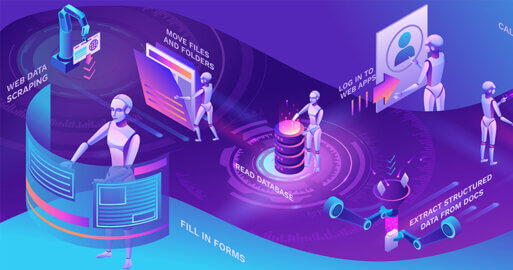Accelerate Time to Value with Effective Partner Onboarding

Digital platforms have fundamentally changed the way businesses interoperate. Having interconnected networks of partners accelerates transactions, improves data sharing and security, and offers exceptional service levels to customers. And while business agility is essential in building effective partner ecosystems, 90% of corporate leaders admit that their current business model is not fit for the future, and few are acting fast enough to create platform strategies that can meaningfully impact their performance[1].
By expanding through ecosystem development, businesses can penetrate new markets, offer differentiating services without lengthy lead times, and even expand globally. Product managers and corporate leadership consider partnership a growth strategy, yet partner onboarding effectiveness is often overlooked as a key performance indicator. However, the faster a company can onboard a partner, the sooner they can benefit from shared revenue streams.
What’s wrong with partner onboarding today?
It’s amazing to me that even with the widespread adoption of automation technologies and repeatable workflow-based delivery, partner onboarding remains a largely manual process. Often, a business partner is onboarded through untracked and unreliable email communications. Spreadsheets or documents containing sensitive information are passed back and forth. IT teams are left to their own devices to accomplish defined onboarding tasks.
And, business project owners must sift through email responses to see where each customer sits in the process. This process includes manual validation of critical data that must be exchanged between the business partner and the company. This exchange can go back and forth multiple times, extending the onboarding process. In some cases, what looks like a simple partner onboarding can take anywhere from six to eight weeks or longer.
The manual nature of this process lends itself to multiple levels of failure. The business project owner might not have the correct customer contacts, or if a contact changes, it might not get properly tracked. Responses to emails often splinter, especially when several people are on the email chain. It then becomes easy to lose track of progress, duplicate steps, or miss critical actions in the onboarding process. Data loss is also a risk, as email is an unsecured method of communication. Without a standardized, repeatable process, successful onboarding can take weeks or months, if it happens at all.

Standardization is the key to partner onboarding
From what I have noticed, behind every successful partner onboarding project is careful monitoring that ensures the right people get the correct information at the right time. From end to end, and at any point, all parties involved must know what’s happening and why. By defining standardized set communication paths, repeatable steps, business compliance, and adequate monitoring, your onboarding process can eliminate confusion, reduce risk and accelerate time to value.
Additionally, standardized onboarding platforms help keep your partners engaged and your transactions running smoothly. By building repeatable workflows, you can quickly test and recertify your partner connections at any time. As regulations change, code advances and new services are offered, you can keep your ecosystem up and running, and that means continued profit across your business network.
Achieving effective onboarding modernization
The driving force behind the development of digital platforms and partner ecosystems is accelerated service offerings, and that means higher profits at a faster rate. No matter how good your software or services are, if your existing onboarding practice takes longer than a week, it’s safe to say it needs to be modernized.
In my experience effective modernization requires two things: a change in thinking and technology adoption. Prioritizing onboarding starts with the company-wide recognition that faster partner onboarding means more revenue for the company. With buy-in from executive and IT leadership, your company can explore technology options. Tools, APIs and workflows that streamline the communications between your organization and your partners provide standardized methods for information exchange. These tools also enhance security throughout data transfer and automate validations. With the right technology in place, you can reduce your onboarding process from weeks to days and significantly improve the effectiveness of your communications and the accuracy of your results.
Build your digital ecosystem
Backed by 30 years of business integration expertise, SEEBURGER has helped thousands of customers accelerate partner onboarding from several weeks to just days. With the intuitive Community Management Application working in tandem with the Business Integration Suite, you can simplify and standardize partner onboarding, apply compliance checks to automate business validations, and introduce business approvals, visualize each onboarding effort with a few clicks, monitor and keep track of all your partners in one dashboard. Additionally, you can tap into the partner onboarding APIs to build repeatable workflows into your custom delivery platforms. Contact SEEBURGER and see how Community Management Application can help you modernize your onboarding practices so you can accelerate the time to value of your entire partner ecosystem.
[1] The Innovator, “The Platform Economy,” Jan 19, 2019
Thank you for your message
We appreciate your interest in SEEBURGER
Get in contact with us:
Please enter details about your project in the message section so we can direct your inquiry to the right consultant.
Written by: Senthil Sundaram
Senthil Sundaram, Solutions Architect, Process Industries is responsible for designing enterprise integration solutions with SEEBURGER technology. Working with customers in financial services, utilities and other industries, Senthil provides expertise on architecture and development for SEEBURGER’s enterprise MFT, B2B and API-related business integration technology and solutions. Senthil has more than 8 years of experience working with product and solution delivery of EAI, EDI, B2B, MFT, API, digital transformation and industry-specific technology initiatives, both on-premise and in the cloud. Senthil has been with SEEBURGER since May 2016, and prior to this worked with international business integration technology providers in various technical integration roles. Senthil has a master’s degree from Arizona State University.





